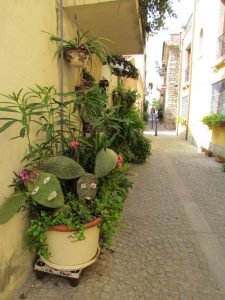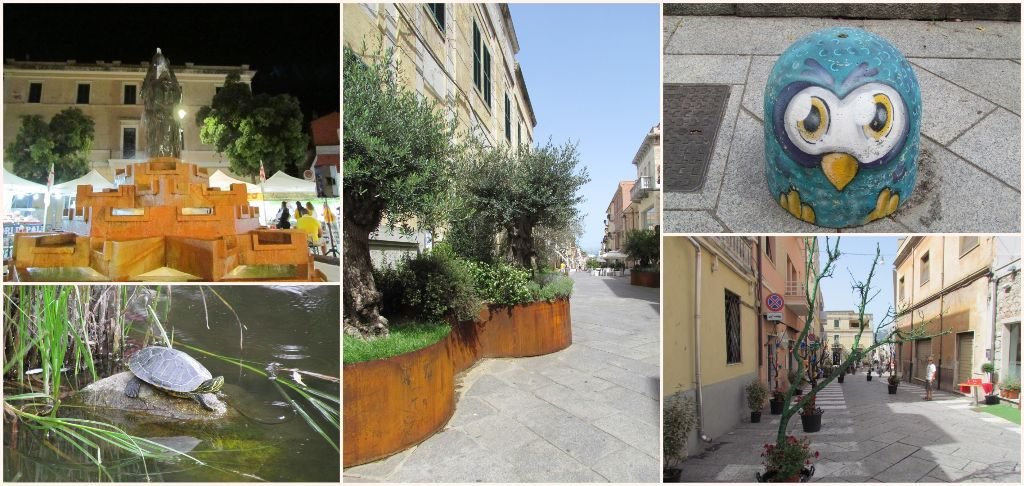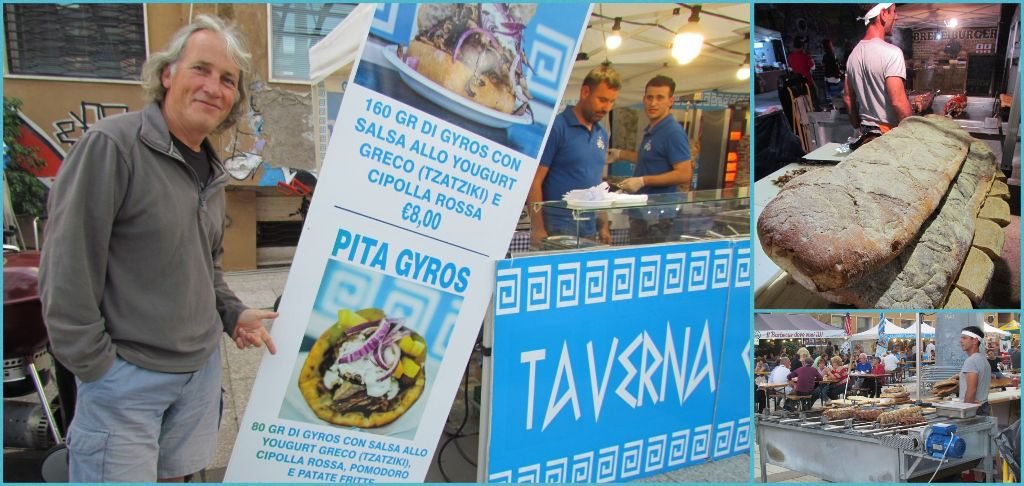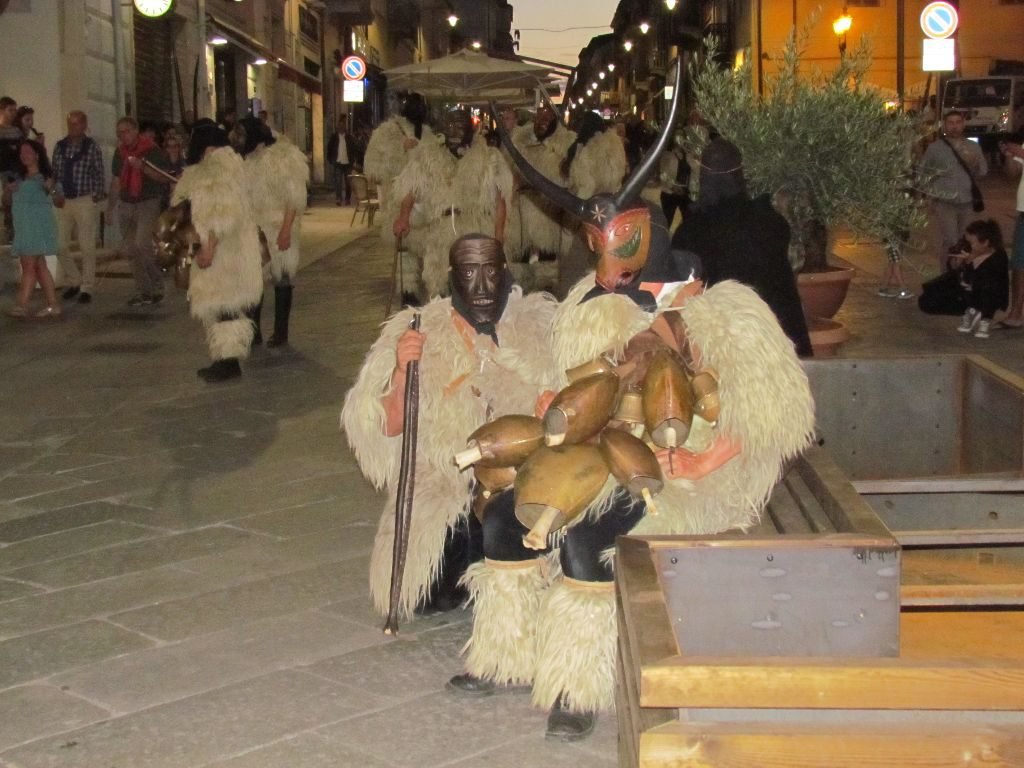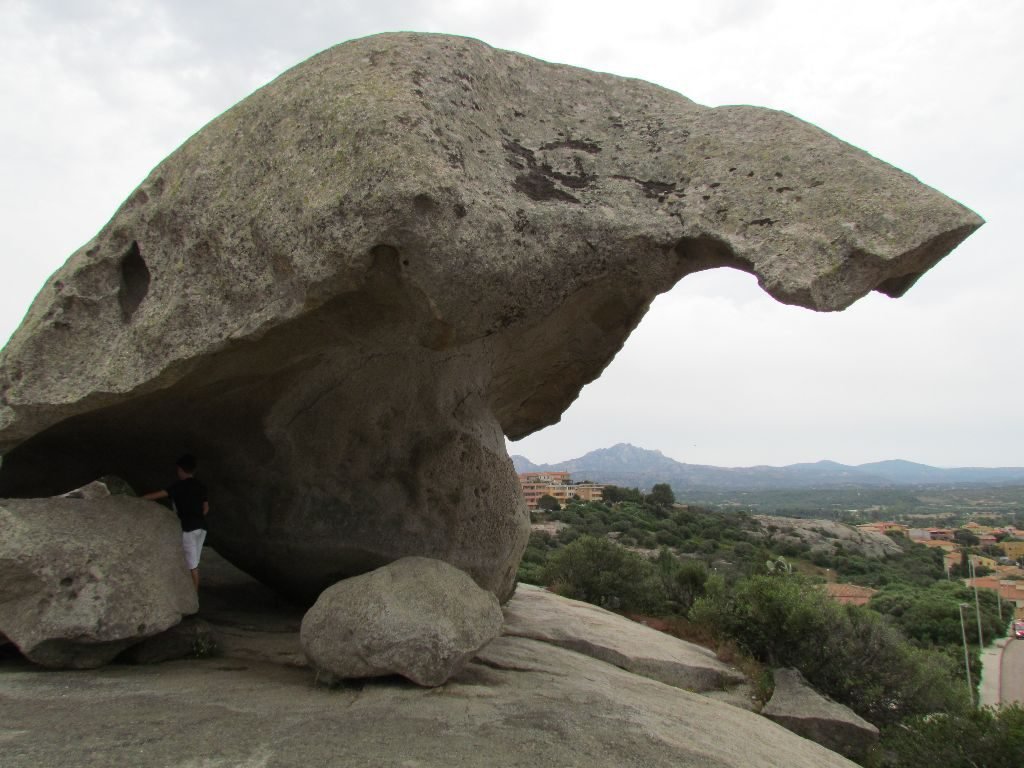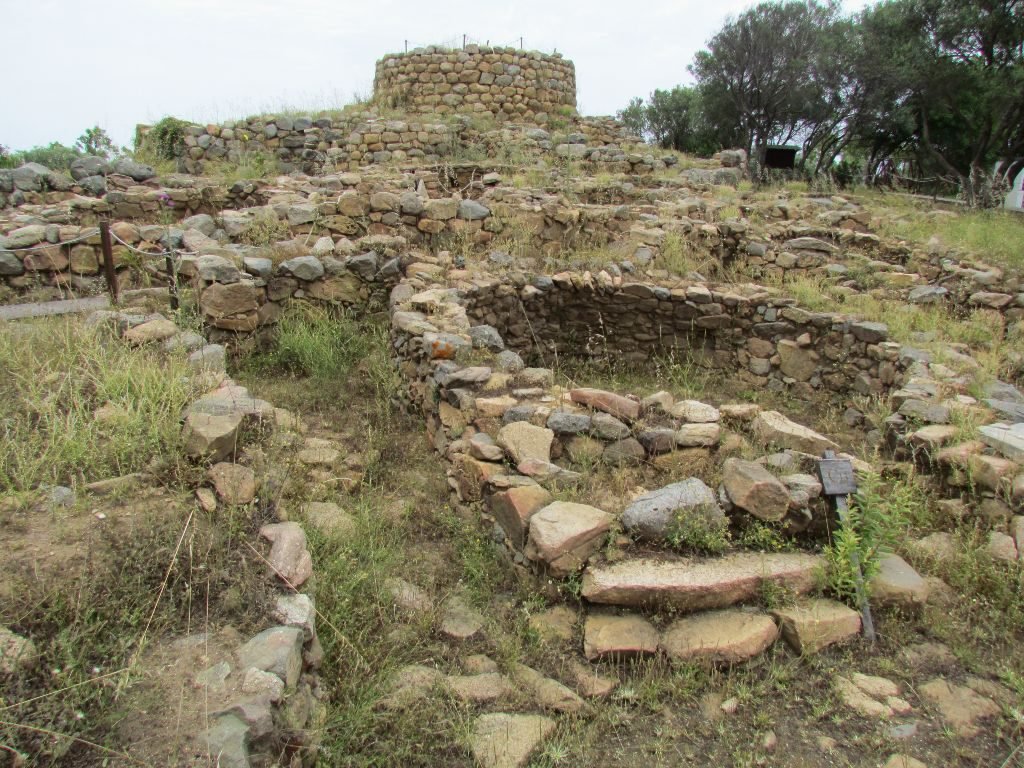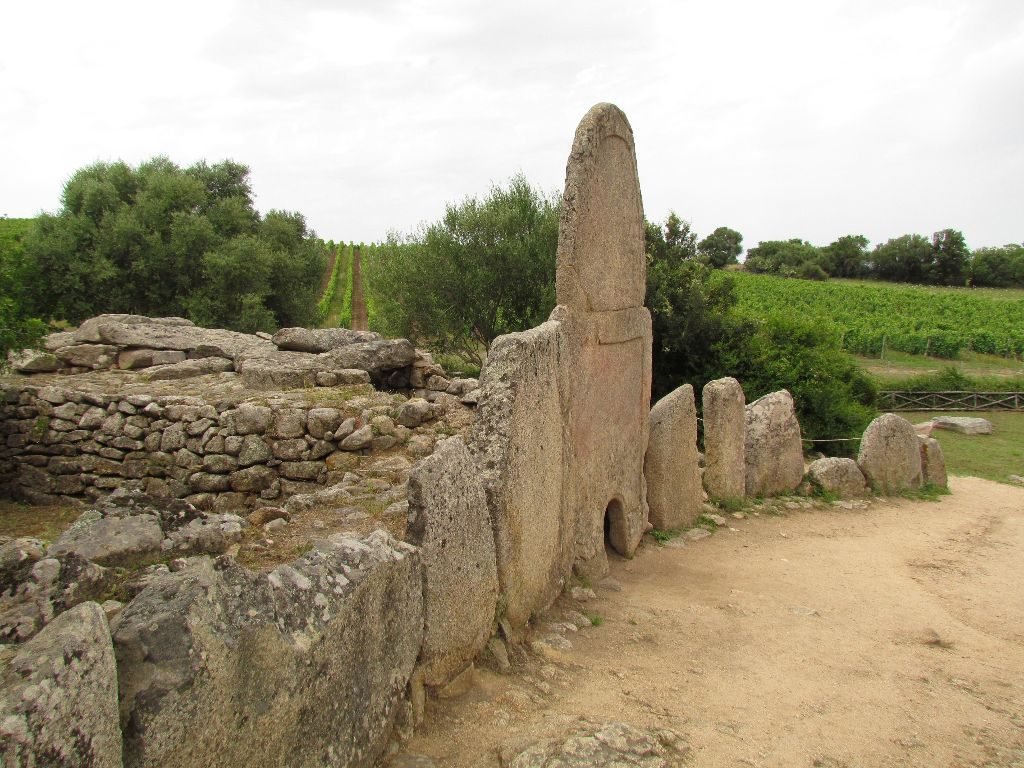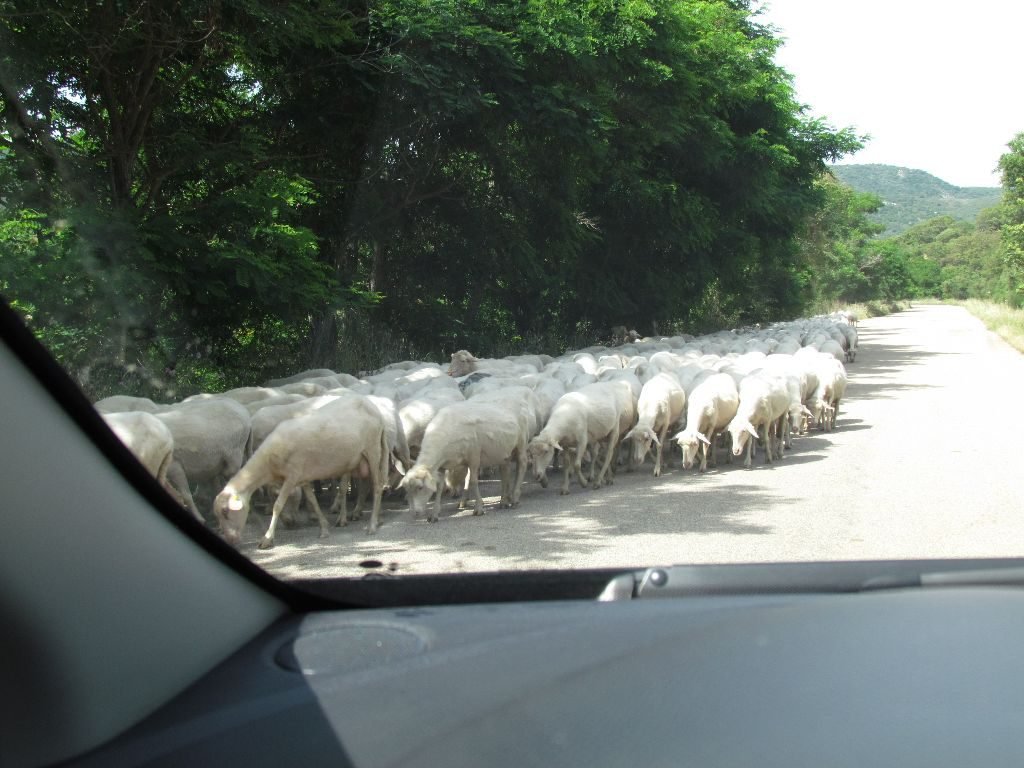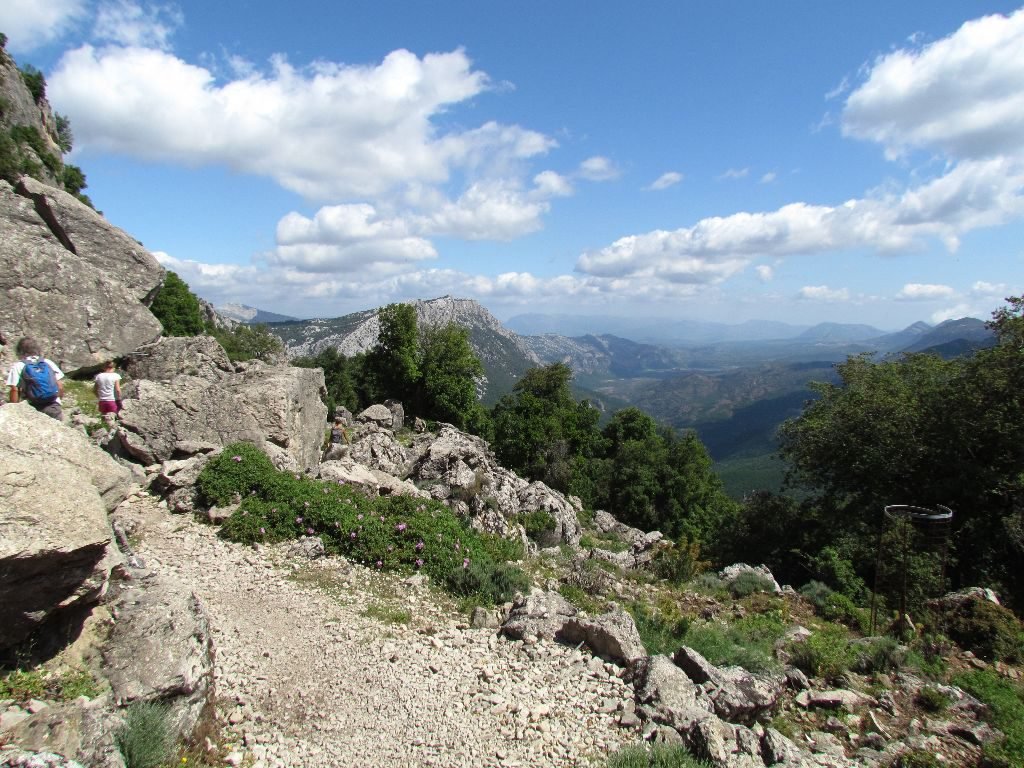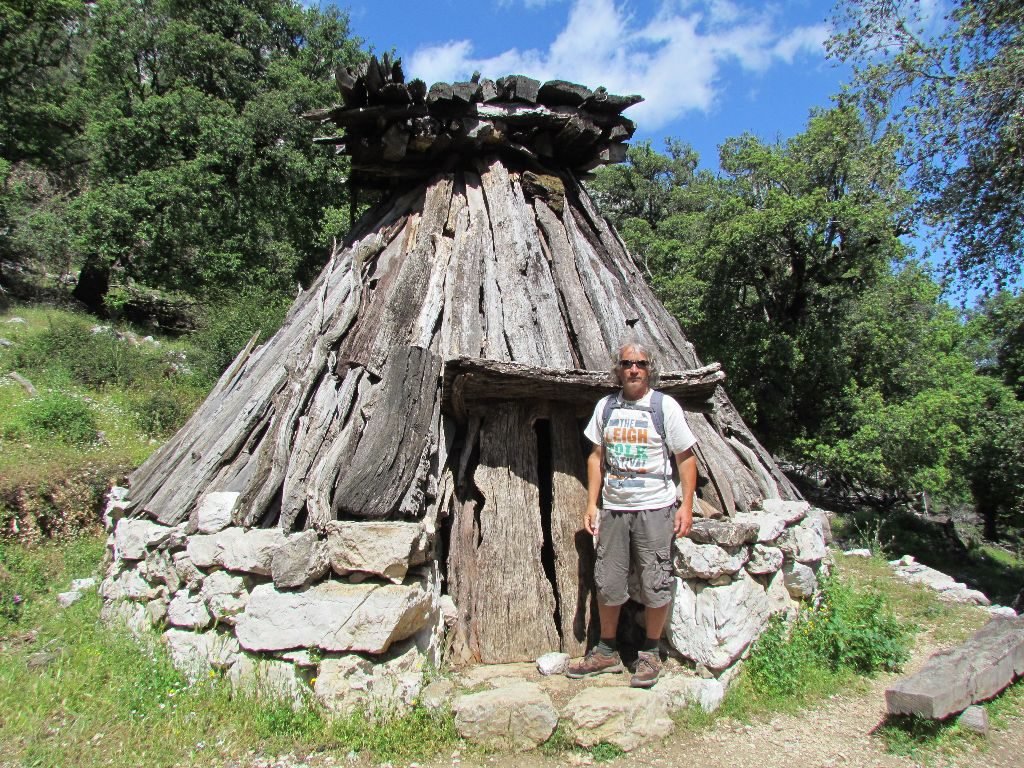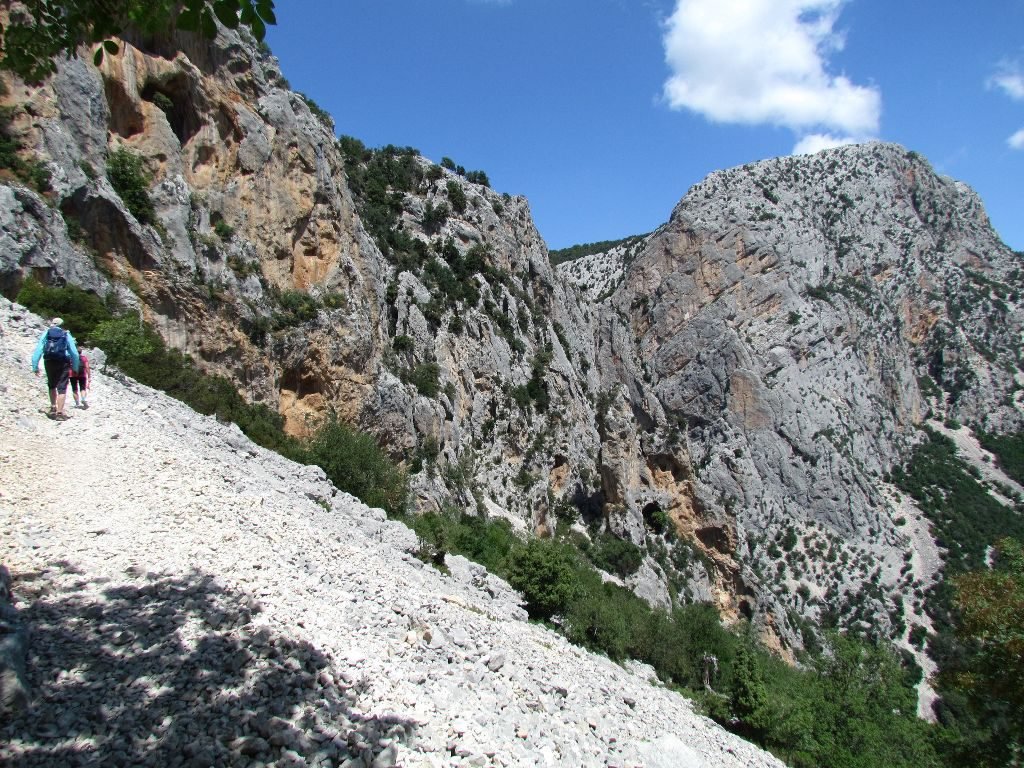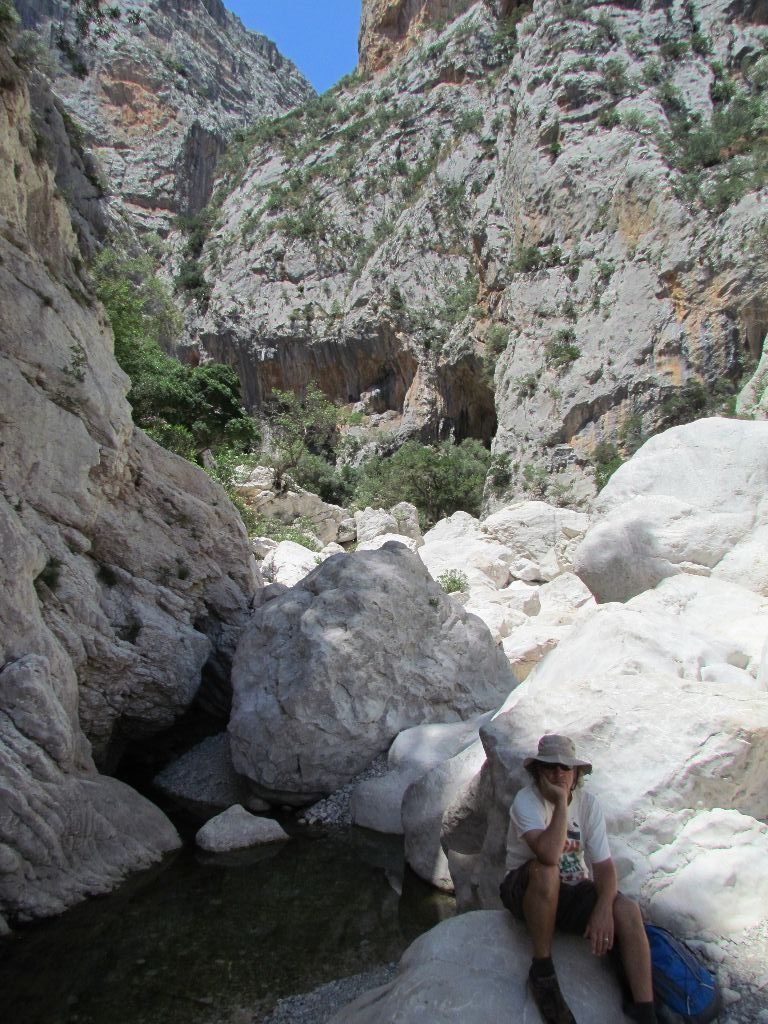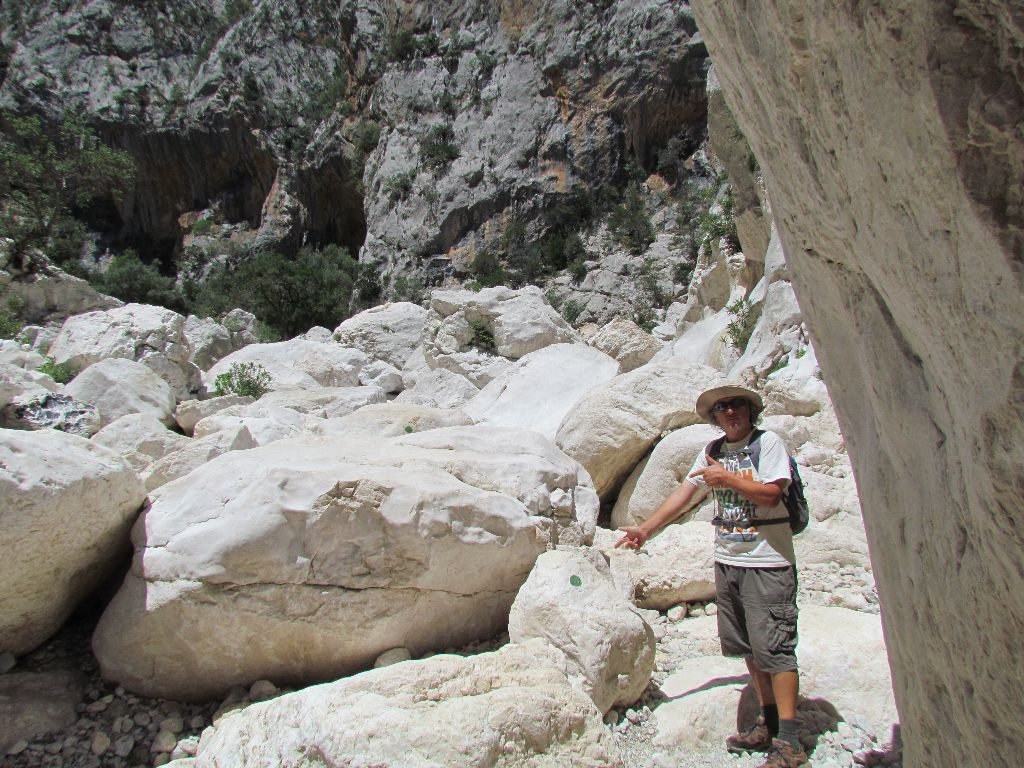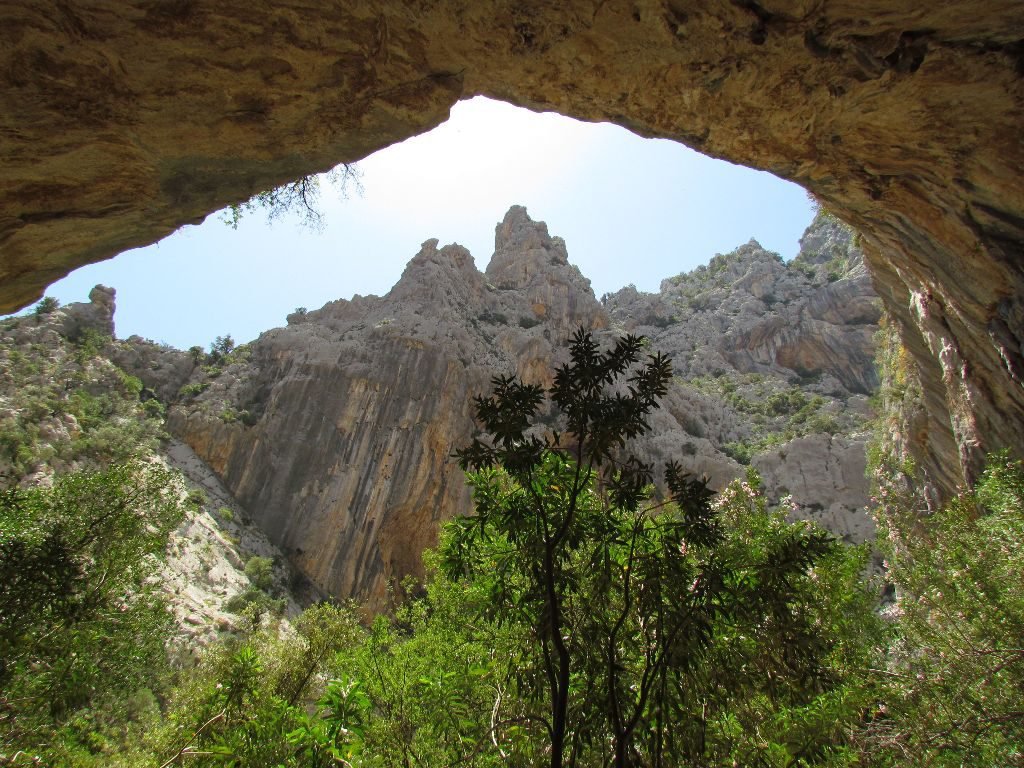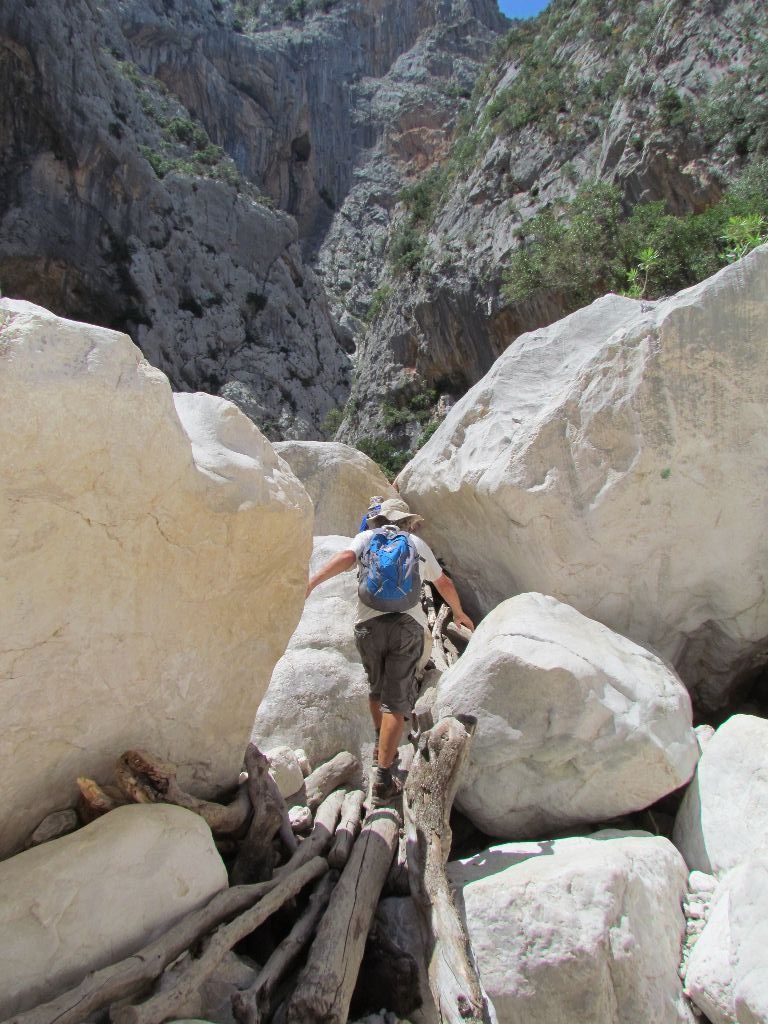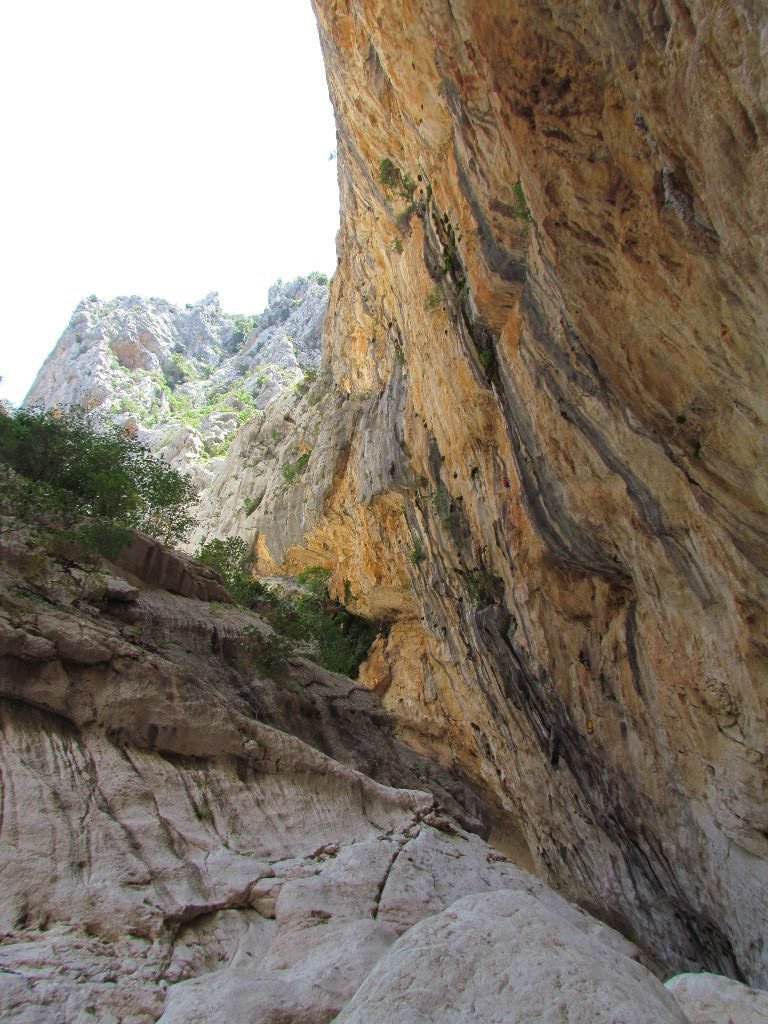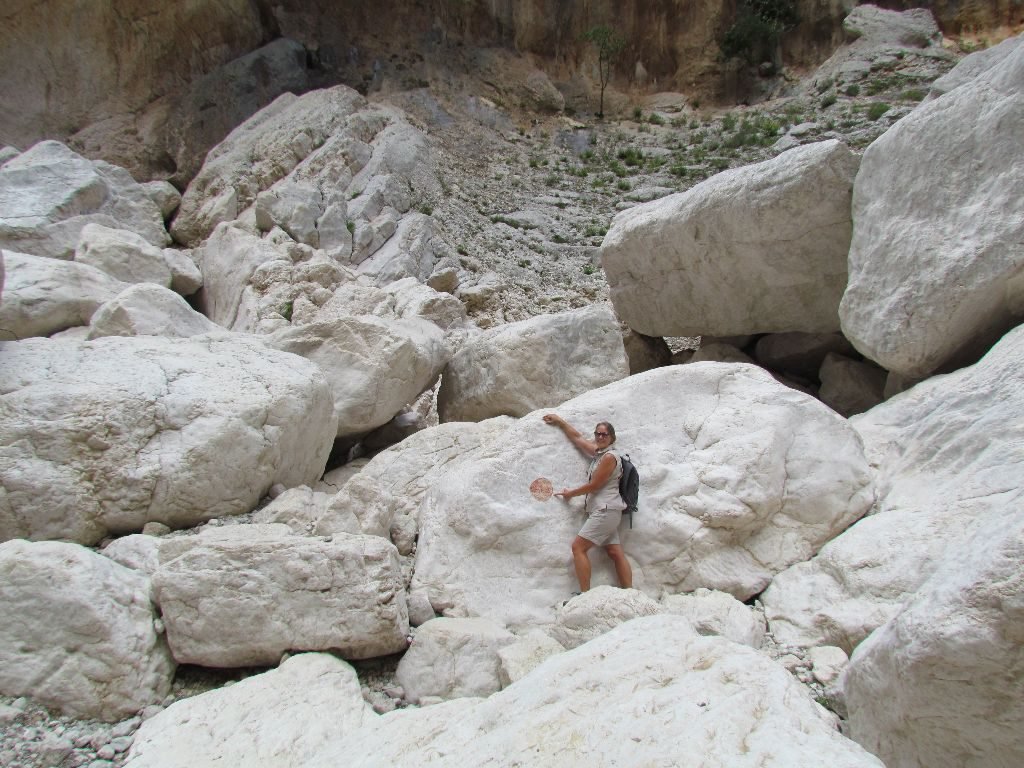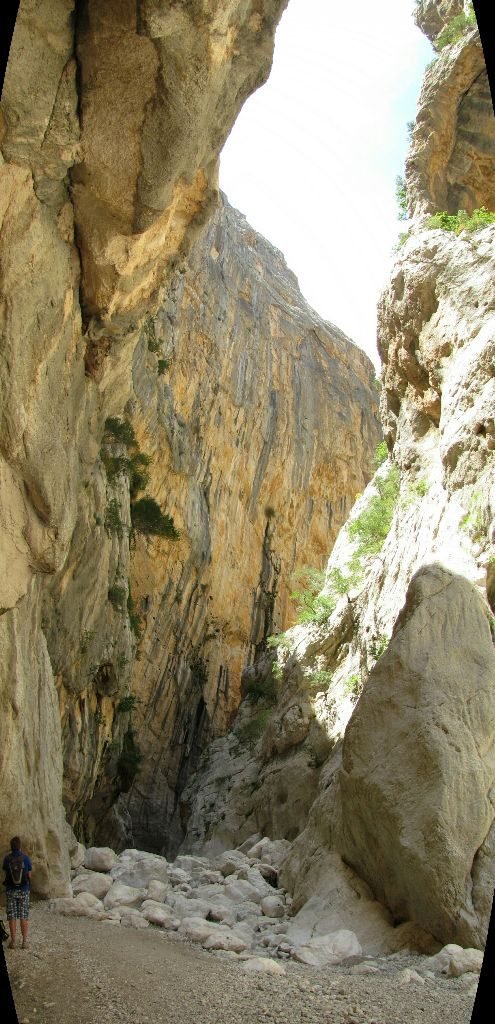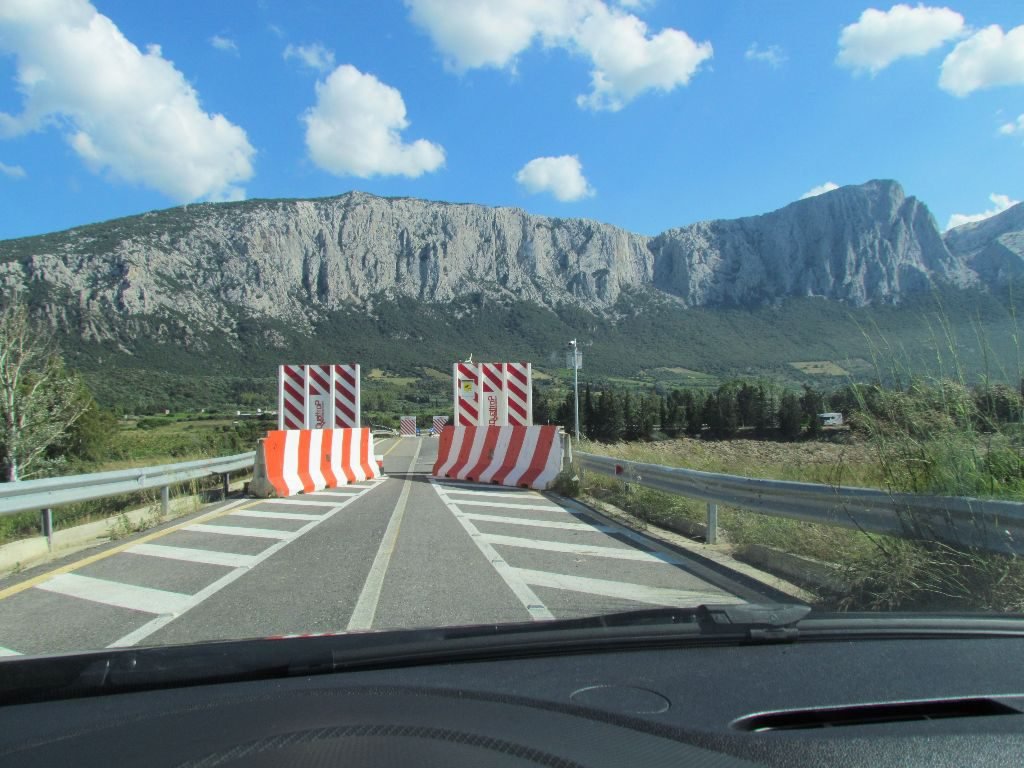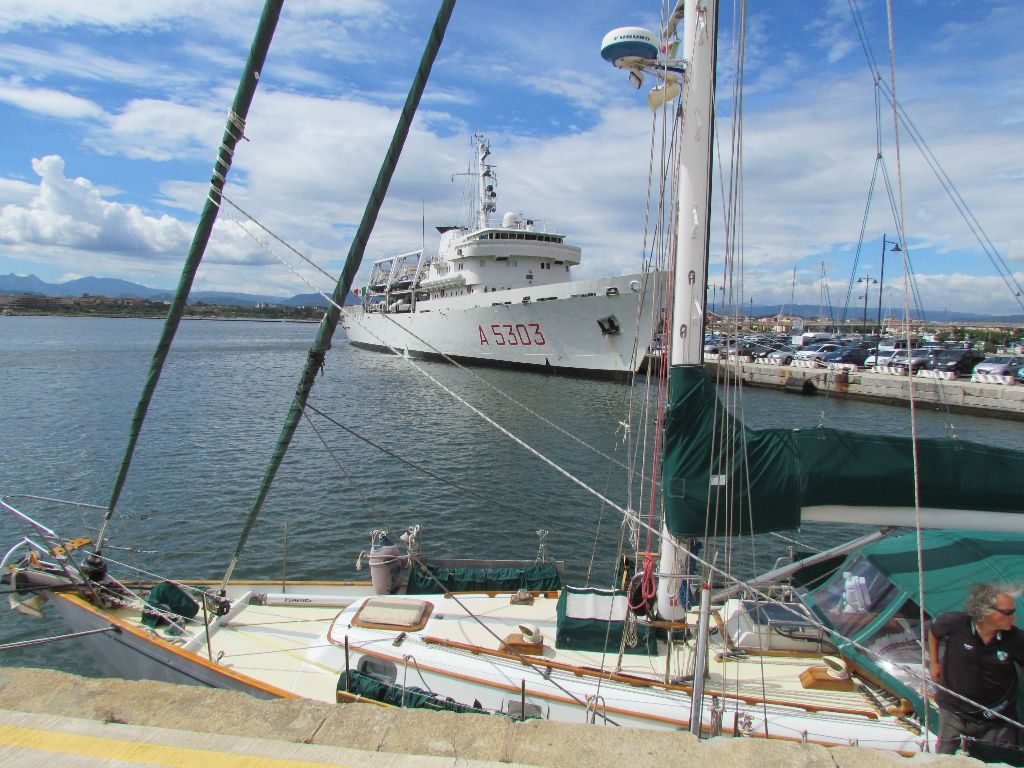Olbia
Having limited finances, we spend most of our time at anchor during the summer, especially from June onward when marina prices in this part of the Med skyrocket to budget busting proportions. The downside of this is that we don’t always get to see as much inland as we’d like. So the opportunity to spend time on a free quay which was right in the centre of Olbia was not to be passed up. We did however, end up staying far longer than intended. We can get a little lazy when things are easy, although our laziness bit us on the bum, the telling of which I will save for the end of the blog.
We arrived on the Molo Brin quay one evening and tucked ourselves into the landwards corner between it and the car park mole and hunkered down as the next three days brought bad weather with rain and thunder. We tried to get out and about between the downpours, but got caught out whilst wandering around a park, not dressed for the weather. Luckily there was a handy rock bar/cafe to shelter in nearby, although after several hours of heavy rain it looked like we’d be looking for a bed for the night, before a brief lull allowed us to leg it home. The weather brightened up and we had a couple of days of exploring inland followed by another day of thundery weather when we foolishly decided to do our laundry and of course had nowhere to dry it. Then as we were about to leave, the temptation of a street food festival caused us to linger a little longer.
There have been thefts from boats both on the quay and at anchor in the past years and a little worry worm burrowed into our brains over the first few days. A cloak of paranoia well and truly settled over us, despite nothing happening to us or to other boats we spoke to. Every time a bird landed on deck we’d be rushing out thinking someone had got on board. The sound of a conversation from outside from a person on their phone would be viewed with the highest of suspicion, because of course they were casing out the joint and passing the info on to a partner in crime, rather than just happening to be passing by when their phone rang. After a few days we relaxed and the worst that happened was that a piece of pizza found it’s way onto the deck and we ended up stepping on it in the dark. Most likely one of the huge ravens had dropped it there rather than any malicious intent.
tMolo Brin, Olbia
Olbia means ‘happy town’ and it did seem quite a cheerful place. There are shops, cafes and restaurants a plenty and the warren of streets and old buildings behind the harbour was pretty. Slightly outside the centre is the Fausto Noce park, the location of our unplanned soaking but a pleasant place for a wander with lots of greenery (must be all that rain), trees and flowers. I even joined the joggers for a few laps around the network of paths. The archaeological museum right by the quay is free but other than the remains of a Roman ship there isn’t much to see beyond the usual bits of pots and such with several display cases standing empty. However, it was interesting to learn that we were moored on the site of an ancient Roman port.
In the evening the town comes alive as people come out for their passegiata, filling up the squares. There was live music at several bars but unfortunately as we found through the winter in Italy, the music at the rock bar didn’t start until midnight. We joined the evening stroll on several nights, ending up at what became our favourite bench in piazza Margherita where we would sit with the nonnas, listening to a young man singing and playing guitar at a nearby bar and happily watching the world go by.
A street food festival came to town with international cuisine on offer as well as Sardinian specialities. With so much fantastic food to tempt us it was a tough choice of what to go for. We started off grazing on BBQed lamb on a stick and fried local mussels. For main course, Colin couldn’t resist a pita gyro having sadly left them behind in Greece last year whereas I went for a local dish – a huge serving of spit roasted pork including perfectly crispy crackling served inside a huge toasted wedge of focaccia. It was divine!
Whilst we ate a musician entertained us with some Americana songs and earlier in the evening we’d been delighted to see a traditional mamuthones display. Men and boys wearing thick sheepskin cloaks and beautiful carved, wooden masks, some weighed down by huge cow bells paraded through the town. They would grunt and make noises along with the ear splitting jangling of all those bells. Every so often a ‘fight’ would break out between a pair or one would sit down and refuse to move triggering the cracking of whips or some pokes with a boot to the one on the ground.
Road Trip Day 1 – Nuraghes, Lovely Old Trees and a Mushroom Shaped Rock
We hired a car for a great rate from Olbia airport and set off on a warm but cloudy day to Arzachena and our lunch stop at a mushroom shaped rock. It was an impressive rock, I would say a porcini mushroom would most closely describe it’s shape and we ate our sandwiches enjoying the view from under it’s shelter looking out to the countryside.
Our next destination was a couple of nuraghe sites that ring the town. After our failed attempts to find nuraghe around Cabo Carbonara we felt it best to go to a properly excavated site. With several to choose from we went for the nuraghe la Prisgiona, which has a village and tower and from there took a 1km nature walk through the woods to a Giants Tomb. The village was from around 1400 BC, it put me in mind of the remains of round houses seen in the UK. It seemed that round was the way to build in those days. The site comprised of just a small section of what would have been a large settlement, 15 dwellings out of possibly 100 that are now buried in the surrounding countryside. The feature of the village was a central tower into which we could enter.
Having immersed ourselves in man made history, our next stop was natural history and some very old olive trees. We had a bit of a roundabout journey to arrive at them. They are sited along the side of a large, man made lake and from our starting point we planned to approach from the north. But our route was blocked by a waterworks and a big gate (we’re not having much luck with gates in Sardinia). There was nothing we could do but retrace our steps and console ourselves that we weren’t the only ones as several other cars arrived as we were doing a u-turn, whilst blaming Google maps.
At least the scenery was lovely and the driving was pleasant…. most of the time. The locals liked scaring us by taking corners on the wrong side of the road. There were several times where we had to take avoiding action as a car came around a bend on our side of the road and one car came around a corner so fast, just managing to keep to their side that as I looked back in the mirror I expected to see it in the hedge.
We finally found the trees having almost circumnavigated the lake. It was a surprising E2.50 to get in but at least this meant the trees were looked after with walkways around them. The first tree was approx 3000 years old, with another nearby at 2000 years and a mere whippersnapper at 500 years old. The site was peaceful with just a handful of visitors and we could get right up close with the younger two to admire their gnarly bark and amazingly twisty branches.
Our final stop was just outside Olbia to the north of the town, next to a cash and carry warehouse. There we found an ancient well, Pozzo Sacro Sa Testa, nicely restored with a paved walkway leading up past labelled native plants.
The countryside in north Sardinia was beautiful. At the time of year there was still plenty of colour and the lower levels had a pastoral feel, with fields of hay being prepared for harvest and swaths of bright green from the acres of vineyards. Backing this were jagged peaks, their rocks weathered into weird formations.
Road Trip Day 2 – Gola su Gorropu
For day 2 we headed back south to not far inland from where we had been anchored at Cala Luna. Our destination would be the Gola su Gorropu Gorge – described as the Grand Canyon of Sardinia. The driving was easy with very little traffic along one of the main dual carriageways. After around an hour we turned off onto a smaller road which passed through a flat, fertile plain with the white bulk of the Supramonte mountains rising dramatically ahead of us.
From Dorgali the road began to steadily wind upwards as we climbed the side of a wide canyon. The traffic was still light, a few touring motorcycles out enjoying the curves but we really hoped any approaching cars would stick to their side; with the road perched over the side of a long drop off, any accident would result in a plunge to certain death. After pulling over a few times to enjoy the stunning scenery, we arrived at the start of our walk, the pass of Genna Silana.
It’s a 650m descent over around 2.6 miles, starting off gently downwards through oak woods before becoming steeper, the path in places coated in tiny gravel, which made each step an adventure.
At the bottom and at the entrance to the gorge is a controlled point beyond which it costs E5 to enter, for this you are given a talk about the gorge and I guess they will come and rescue you (or at least we hoped) in case of injury. The canyon was formed by the Rio Flumineddu – the section we walked through had no water in it at this time of year as the river was under our feet having been absorbed by the limestone rock. Downstream of the entrance the river emerged as the rock turned to granite which is unable to soak up the water. During winter, water hoofs it’s way over where we were walking – a boulder the size of a minibus was pointed out to us that had been moved several meters by the force of water. What an awesome sight that would be to see.
The gorge has been marked out for ease of passage and each of the routes was explained – the first section was green for easiest, then yellow and red. We were also told about the nature we might see – the rare Columbine plant, the shy mouflon which come down to drink the water and we were asked to be quiet to avoid disturbing nesting golden eagles.
We set off following the green dots that guide you to the best route over the boulders. Despite being labelled the easiest, it still involves some scrambling in places. As an aid, where the route gets tricky, logs have been laid to provide a level surface to walk on. Every year the guides have to remark the route as boulders are moved about and previous markings erased.
The green marks bring you to the narrowest section of the gorge – just a few meters wide and soaring 400m above our heads. Some crazy climbers were scaling ‘The Hotel du Gorropu’ cliff face, an extremely technical climb with a ledge on which they can sleep part way up, hence the name. We sat and watched them slowly ascend, tiny rocks dropping every so often, at one point one of them letting go and swinging around before reestablishing a grip on the sloping outwards canyon wall.
After the relatively easy green section we came to a solitary yellow blob. From now on the way got harder and we would have to find our own track. Several other people were doing the same and we helped each other out with suggestions or a hand up.
We clambered and slid our way over the enormous boulders, worn super smooth by the passage of fast flowing water and with few handholds. I tried going barefoot as suggested by the guide which did help. My feet gripped the steeply sloping rock much better than my shoes but my shoes tied onto my bag then conspired to drag me back off the rock when they jammed themselves in a crack. Shoes back on, the going became much easier as we had reached another flat section before another scramble over more giant white marbles. We made it as far as the start of the red section – from here on the size of the boulders increased and we had been advised not to continue without climbing gear. It seemed like a sensible place to turn around, everyone else making the same decision too.

From here on, the way became more technical and we were advised not to continue without climbing gear
The descent was much easier as we employed the sliding method to get back down the route we had struggled to pull ourselves up. Lots of fun and I let out a few (quiet) weeeeeeeeeee’s along the way.
We were surprised to find we had spent nearly two hours clambering about. It was now mid afternoon and our choice was a 650m climb in the heat or the jeep transfer that was advertised at the control point. A jeep transfer was sounding awfully tempting, especially as my toes had started to attack each other in protest at being squeezed into closed shoes (one drew blood from the other, the rotter) having become used to the freedom of sandals for so long. We enquired about availability and snapped up the last two places on the next departure. Colin was very happy. We had plenty of time to make the 45 minute walk to the pick up point so took the opportunity to refill our bottles with water from the wonderfully cool spring water that flows from a black pipe by the side of the river. It was fantastically refreshing before an easy walk through shady woods.
Although we took the easy way up, the jeep trip itself was an experience. 10 people squeezed into a Land Rover (we were on the side benches in the back) bouncing our way up a very steep, rutted and winding track, the driver showed lots of skill. At least if it did all go wrong and we rolled off the side, there was so much flesh squashed in, we would provide plenty of cushioning to each other on the way down. Being the skilled driver that he was, we of course arrived safely back at our car.
On the drive home we took a different route to pay a visit to Lidl in Nuori, Google sending us via a road that ran alongside a river running along the bottom of the Supramonte mountains. There was a bright yellow sign at the start of the road, but it flashed by so fast we didn’t get time to translate it. And so, 7km further along we came to a bridge with a barrier across it with just a small gap left for people and motorbikes. We watched a campervan arrive at the other side, also realising it’s mistake as we both turned around and once again on this road trip, retraced our steps. We did find another way to Nuori and restocked at the Golden Circle, ah how we had missed our provider of spicy nuts and snacks.
The Sting in the Tale
And so, with the summer ticking away, we decided we ought to get going having had an excellent time of inland touring, festivals and enjoying being right in a town. We had planned to leave Saturday morning but with forecast north winds that would hinder our progress and with it being an international rugby day, we decided to hang on and watch the games onboard rather than risk a poor internet signal in an anchorage.
In the early evening, as we were watching the South Africa v England game, there was a shout outside. Initially we ignored it as just someone having an exciting conversation on their phone. But then it came again. We put our heads out and standing by the boat were two members of the coastguard in their smart uniforms. As with every other boat on the quay, we were requested (in a friendly manner and with very good English) to complete a form giving permission to stay another 48 hours, visit a tabac to play E16 in return for a stamp and take both to the Coastguard office which was a few minutes walk away on the way to the ferry port. I think the guy in the office hadn’t been warned that 7 or 8 groups of people would be turning up, but he too was very friendly. But if only we hadn’t been quite so lazy that morning!
Sailing Info
There are iron rings and bollards set along the quay, not always at the best spacing for smaller boats so longer lines are useful. It is also possible to moor along the car park quay, however, the coastguard ship took up residence there from Friday morning to Monday and all boats were moved on. There is also an anchoring area off the end of the car park quay.
There are no facilities such as water and electric and disappointingly a lack of decent sized rubbish bins. A big box sits in the carpark that takes plastic, glass, tins, etc. for recycling but you need an ID card to open up the chutes. The only bins were small so we emptied our waste regularly.
Having looked at the water quality, we decided not to use out watermaker and pickled it again.
We were very nervous about the tales of burglary from the last few years. Thankfully we can report that we had no problems and nor did we hear of any problems from others who had been there recently.
The area behind the quay is a free car park which was very handy for when we had the hire car. Many car hire companies have a base at Olbia airport and we simply chose the best offer we found on a car hire website. The airport can be reached by the number 2 and number 10 bus which run every 10 to 15 minutes. A single journey costs E1.50 and tickets can be bought on board.
Being a car park, there are people coming and going all day as well as those just having a stroll along the quay so it was noisy at times. Groups of teens came to sit and chat in the evenings but they’d be gone by midnight and there was no trouble from them.
The nearest supermarket is a Pan in Piazza Crispi, turn left from the end of the quay and follow the road along for a few minutes. There are several other supermarkets out by the airport.
Recommendations
We used the Bolle Di… Sole Di Lorena Pischedda self service laundry which is off the main street, around 10 minutes walk from the quay – an 8kg load cost between E4 and E4.50 with 15 minutes of drying for E2.50.
We highly recommend the Biddibo trattoria, at the top of Piazza Mercato, for a meal out. Very generous portions and a great price. E12 for a first course from a selection of pasta dishes, a second course of meat or fish choices, a side dish, coffee and a liqueur. The house wine was great and the welcome was super friendly. The owner is a musician and he came out to sing a few songs to the diners.


